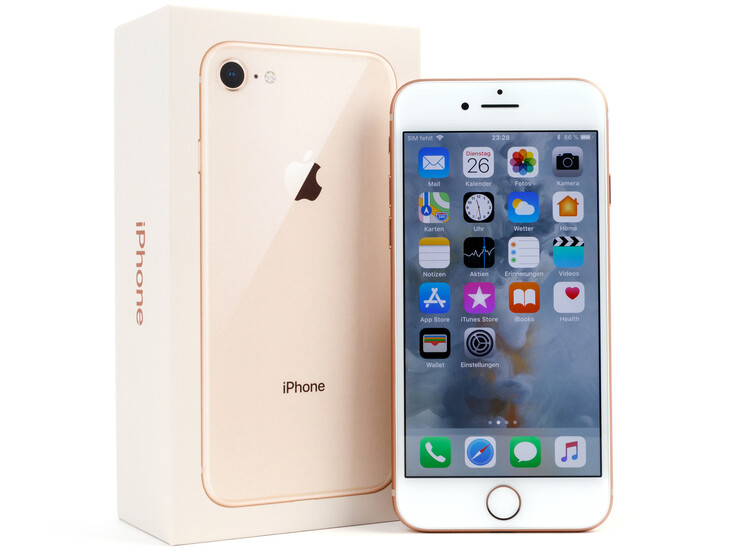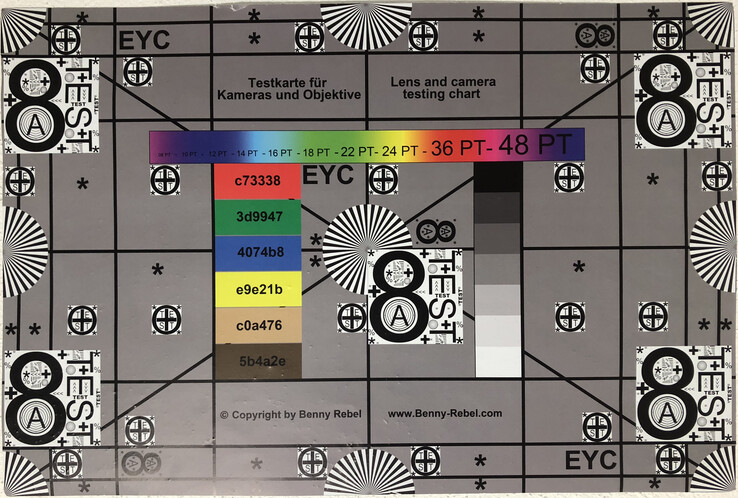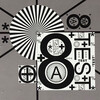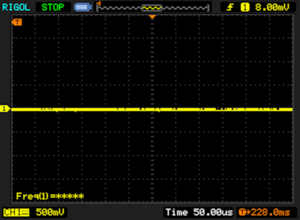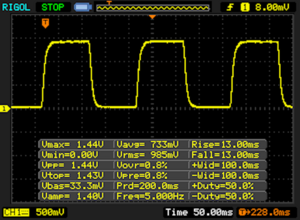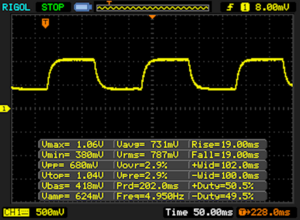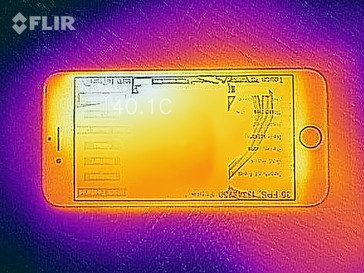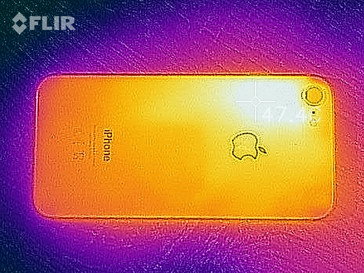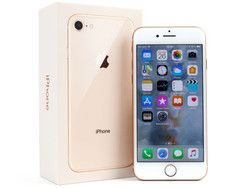Test: Apple iPhone 8 (Sammanfattning)
Topp 10...
» Topp 10: Bästa bärbara allround/multimediadatorerna
» Topp 10: Bästa bärbara speldatorerna
» Topp 10: Bärbara budget/kontorsdatorer
» Topp 10: Bästa bärbara kontors/premiumdatorerna
» Topp 10: Bärbara arbetsstationer
» Topp 10: De bästa små/kompakta bärbara datorerna
» Topp 10: Bästa ultrabooks
» Topp 10: Bästa hybriddatorerna
» Topp 10: Bästa surfplattorna
» Topp 10: Marknadens bästa smartphones
| Networking | |
| iperf3 transmit AX12 | |
| Samsung Galaxy S8 | |
| Apple iPhone 8 | |
| Huawei P10 | |
| LG G6 | |
| iperf3 receive AX12 | |
| Apple iPhone 8 | |
| Samsung Galaxy S8 | |
| LG G6 | |
| Huawei P10 | |
| |||||||||||||||||||||||||
Distribution av ljusstyrkan: 91 %
Mitt på batteriet: 604 cd/m²
Kontrast: 1373:1 (Svärta: 0.44 cd/m²)
ΔE ColorChecker Calman: 1.2 | ∀{0.5-29.43 Ø4.78}
ΔE Greyscale Calman: 1.6 | ∀{0.09-98 Ø5}
99.9% sRGB (Calman 2D)
Gamma: 2.25
CCT: 6688 K
| Apple iPhone 8 A11 Bionic GPU, A11 Bionic, Apple 256 GB (iPhone 8 / Plus) | Apple iPhone 8 Plus A11 Bionic GPU, A11 Bionic, Apple 256 GB (iPhone 8 / Plus) | Apple iPhone 7 A10 Fusion GPU, A10 Fusion, 128 GB NVMe | Samsung Galaxy S8 Plus Mali-G71 MP20, Exynos 8895, 64 GB UFS 2.1 Flash | Huawei Mate 9 Mali-G71 MP8, Kirin 960, 64 GB UFS 2.1 Flash | |
|---|---|---|---|---|---|
| Screen | -4% | -2% | -16% | -88% | |
| Brightness middle (cd/m²) | 604 | 559 -7% | 556 -8% | 560 -7% | 696 15% |
| Brightness (cd/m²) | 580 | 538 -7% | 519 -11% | 562 -3% | 680 17% |
| Brightness Distribution (%) | 91 | 90 -1% | 90 -1% | 93 2% | 93 2% |
| Black Level * (cd/m²) | 0.44 | 0.38 14% | 0.34 23% | 0.42 5% | |
| Contrast (:1) | 1373 | 1471 7% | 1635 19% | 1657 21% | |
| Colorchecker dE 2000 * | 1.2 | 1.3 -8% | 1.3 -8% | 1.7 -42% | 4.3 -258% |
| Colorchecker dE 2000 max. * | 2.3 | 2.7 -17% | 2.6 -13% | 3.4 -48% | 9.4 -309% |
| Greyscale dE 2000 * | 1.6 | 1.8 -13% | 1.9 -19% | 1.6 -0% | 4.8 -200% |
| Gamma | 2.25 98% | 2.25 98% | 2.26 97% | 2.13 103% | 2.33 94% |
| CCT | 6688 97% | 6797 96% | 6818 95% | 6435 101% | 7255 90% |
| Color Space (Percent of AdobeRGB 1998) (%) | 63.15 | 81.57 | |||
| Color Space (Percent of sRGB) (%) | 99.71 | 99.87 |
* ... mindre är bättre
Skärmflimmer / PWM (Puls-Width Modulation)
| Skärmflimmer / PWM upptäcktes inte | |||
Som jämförelse: 53 % av alla testade enheter använder inte PWM för att dämpa skärmen. Om PWM upptäcktes mättes ett medelvärde av 8111 (minst: 5 - maximum: 343500) Hz. | |||
Visa svarstider
| ↔ Svarstid svart till vitt | ||
|---|---|---|
| 26 ms ... stiga ↗ och falla ↘ kombinerat | ↗ 13 ms stiga | |
| ↘ 13 ms hösten | ||
| Skärmen visar relativt långsamma svarsfrekvenser i våra tester och kan vara för långsam för spelare. I jämförelse sträcker sig alla testade enheter från 0.1 (minst) till 240 (maximalt) ms. » 61 % av alla enheter är bättre. Detta innebär att den uppmätta svarstiden är sämre än genomsnittet av alla testade enheter (20.2 ms). | ||
| ↔ Svarstid 50 % grått till 80 % grått | ||
| 38 ms ... stiga ↗ och falla ↘ kombinerat | ↗ 19 ms stiga | |
| ↘ 19 ms hösten | ||
| Skärmen visar långsamma svarsfrekvenser i våra tester och kommer att vara otillfredsställande för spelare. I jämförelse sträcker sig alla testade enheter från 0.165 (minst) till 636 (maximalt) ms. » 54 % av alla enheter är bättre. Detta innebär att den uppmätta svarstiden är sämre än genomsnittet av alla testade enheter (31.6 ms). | ||
| Geekbench 4.4 | |
| 64 Bit Single-Core Score (sortera efter värde) | |
| Apple iPhone 8 | |
| Apple iPhone 8 Plus | |
| Apple iPhone 7 | |
| Huawei Mate 9 | |
| Samsung Galaxy S8 Plus | |
| Samsung Galaxy Note 8 | |
| 64 Bit Multi-Core Score (sortera efter värde) | |
| Apple iPhone 8 | |
| Apple iPhone 8 Plus | |
| Apple iPhone 7 | |
| Huawei Mate 9 | |
| Samsung Galaxy S8 Plus | |
| Samsung Galaxy Note 8 | |
| Compute Metal Score 4.1 (sortera efter värde) | |
| Apple iPhone 8 | |
| Apple iPhone 8 Plus | |
| Apple iPhone 7 | |
| AnTuTu v6 - Total Score (sortera efter värde) | |
| Apple iPhone 8 | |
| Apple iPhone 8 Plus | |
| Apple iPhone 7 | |
| Huawei Mate 9 | |
| Samsung Galaxy S8 Plus | |
| Samsung Galaxy Note 8 | |
| Octane V2 - Total Score (sortera efter värde) | |
| Apple iPhone 8 | |
| Apple iPhone 8 Plus | |
| Apple iPhone 7 | |
| Huawei Mate 9 | |
| Samsung Galaxy S8 Plus | |
| Samsung Galaxy Note 8 | |
| Mozilla Kraken 1.1 - Total (sortera efter värde) | |
| Apple iPhone 8 | |
| Apple iPhone 8 Plus | |
| Apple iPhone 7 | |
| Huawei Mate 9 | |
| Samsung Galaxy S8 Plus | |
| Samsung Galaxy Note 8 | |
| WebXPRT 2015 - Overall (sortera efter värde) | |
| Apple iPhone 8 | |
| Apple iPhone 8 Plus | |
| Apple iPhone 7 | |
| Huawei Mate 9 | |
| Samsung Galaxy S8 Plus | |
| Samsung Galaxy Note 8 | |
* ... mindre är bättre
| GFXBench (DX / GLBenchmark) 2.7 | |
| T-Rex Onscreen (sortera efter värde) | |
| Apple iPhone 8 | |
| Apple iPhone 8 Plus | |
| Apple iPhone 7 | |
| Huawei Mate 9 | |
| Samsung Galaxy S8 Plus | |
| Samsung Galaxy Note 8 | |
| 1920x1080 T-Rex Offscreen (sortera efter värde) | |
| Apple iPhone 8 | |
| Apple iPhone 8 Plus | |
| Apple iPhone 7 | |
| Huawei Mate 9 | |
| Samsung Galaxy S8 Plus | |
| Samsung Galaxy Note 8 | |
| GFXBench 3.0 | |
| on screen Manhattan Onscreen OGL (sortera efter värde) | |
| Apple iPhone 8 | |
| Apple iPhone 8 Plus | |
| Apple iPhone 7 | |
| Huawei Mate 9 | |
| Samsung Galaxy S8 Plus | |
| Samsung Galaxy Note 8 | |
| 1920x1080 1080p Manhattan Offscreen (sortera efter värde) | |
| Apple iPhone 8 | |
| Apple iPhone 8 Plus | |
| Apple iPhone 7 | |
| Huawei Mate 9 | |
| Samsung Galaxy S8 Plus | |
| Samsung Galaxy Note 8 | |
| GFXBench 3.1 | |
| on screen Manhattan ES 3.1 Onscreen (sortera efter värde) | |
| Apple iPhone 8 | |
| Apple iPhone 8 Plus | |
| Apple iPhone 7 | |
| Huawei Mate 9 | |
| Samsung Galaxy S8 Plus | |
| Samsung Galaxy Note 8 | |
| 1920x1080 Manhattan ES 3.1 Offscreen (sortera efter värde) | |
| Apple iPhone 8 | |
| Apple iPhone 8 Plus | |
| Apple iPhone 7 | |
| Huawei Mate 9 | |
| Samsung Galaxy S8 Plus | |
| Samsung Galaxy Note 8 | |
| Octane V2 - Total Score (sortera efter värde) | |
| Apple iPhone 8 | |
| Apple iPhone 8 Plus | |
| Apple iPhone 7 | |
| Huawei Mate 9 | |
| Samsung Galaxy S8 Plus | |
| Samsung Galaxy Note 8 | |
| JetStream 1.1 - Total Score (sortera efter värde) | |
| Apple iPhone 8 | |
| Apple iPhone 8 Plus | |
| Apple iPhone 7 | |
| Huawei Mate 9 | |
| Samsung Galaxy S8 Plus | |
| Samsung Galaxy Note 8 | |
| Mozilla Kraken 1.1 - Total (sortera efter värde) | |
| Apple iPhone 8 | |
| Apple iPhone 8 Plus | |
| Apple iPhone 7 | |
| Huawei Mate 9 | |
| Samsung Galaxy S8 Plus | |
| Samsung Galaxy Note 8 | |
| WebXPRT 2015 - Overall (sortera efter värde) | |
| Apple iPhone 8 | |
| Apple iPhone 8 Plus | |
| Apple iPhone 7 | |
| Huawei Mate 9 | |
| Samsung Galaxy S8 Plus | |
| Samsung Galaxy Note 8 | |
* ... mindre är bättre
(±) Den maximala temperaturen på ovansidan är 41 °C / 106 F, jämfört med genomsnittet av 35.2 °C / 95 F , allt från 21.9 till 247 °C för klassen Smartphone.
(±) Botten värms upp till maximalt 43.9 °C / 111 F, jämfört med genomsnittet av 34 °C / 93 F
(+) Vid tomgångsbruk är medeltemperaturen för ovansidan 26.8 °C / 80 F, jämfört med enhetsgenomsnittet på 32.9 °C / ### class_avg_f### F.
Apple iPhone 8 ljudanalys
(±) | högtalarljudstyrkan är genomsnittlig men bra (78.4 dB)
Bas 100 - 315 Hz
(±) | reducerad bas - i genomsnitt 14.6% lägre än medianen
(±) | linjäriteten för basen är genomsnittlig (9.2% delta till föregående frekvens)
Mellan 400 - 2000 Hz
(+) | balanserad mellan - endast 4.3% från medianen
(+) | mids är linjära (4.2% delta till föregående frekvens)
Högsta 2 - 16 kHz
(±) | högre toppar - i genomsnitt 5.1% högre än medianen
(+) | toppar är linjära (4.7% delta till föregående frekvens)
Totalt 100 - 16 000 Hz
(±) | linjäriteten för det totala ljudet är genomsnittlig (18.2% skillnad mot median)
Jämfört med samma klass
» 17% av alla testade enheter i den här klassen var bättre, 8% liknande, 74% sämre
» Den bästa hade ett delta på 11%, genomsnittet var 35%, sämst var 134%
Jämfört med alla testade enheter
» 38% av alla testade enheter var bättre, 8% liknande, 54% sämre
» Den bästa hade ett delta på 4%, genomsnittet var 24%, sämst var 134%
Samsung Galaxy S8 ljudanalys
(+) | högtalare kan spela relativt högt (82.4 dB)
Bas 100 - 315 Hz
(-) | nästan ingen bas - i genomsnitt 22.1% lägre än medianen
(±) | linjäriteten för basen är genomsnittlig (11.7% delta till föregående frekvens)
Mellan 400 - 2000 Hz
(±) | högre mellan - i genomsnitt 5% högre än median
(+) | mids är linjära (4.3% delta till föregående frekvens)
Högsta 2 - 16 kHz
(+) | balanserade toppar - endast 3.7% från medianen
(+) | toppar är linjära (6.7% delta till föregående frekvens)
Totalt 100 - 16 000 Hz
(±) | linjäriteten för det totala ljudet är genomsnittlig (21.8% skillnad mot median)
Jämfört med samma klass
» 44% av alla testade enheter i den här klassen var bättre, 8% liknande, 48% sämre
» Den bästa hade ett delta på 11%, genomsnittet var 35%, sämst var 134%
Jämfört med alla testade enheter
» 61% av alla testade enheter var bättre, 7% liknande, 32% sämre
» Den bästa hade ett delta på 4%, genomsnittet var 24%, sämst var 134%
Huawei P10 ljudanalys
(+) | högtalare kan spela relativt högt (82.7 dB)
Bas 100 - 315 Hz
(-) | nästan ingen bas - i genomsnitt 20.9% lägre än medianen
(±) | linjäriteten för basen är genomsnittlig (12.6% delta till föregående frekvens)
Mellan 400 - 2000 Hz
(+) | balanserad mellan - endast 4.2% från medianen
(+) | mids är linjära (6% delta till föregående frekvens)
Högsta 2 - 16 kHz
(±) | högre toppar - i genomsnitt 5.5% högre än medianen
(+) | toppar är linjära (4.9% delta till föregående frekvens)
Totalt 100 - 16 000 Hz
(±) | linjäriteten för det totala ljudet är genomsnittlig (23.6% skillnad mot median)
Jämfört med samma klass
» 53% av alla testade enheter i den här klassen var bättre, 8% liknande, 39% sämre
» Den bästa hade ett delta på 11%, genomsnittet var 35%, sämst var 134%
Jämfört med alla testade enheter
» 70% av alla testade enheter var bättre, 6% liknande, 24% sämre
» Den bästa hade ett delta på 4%, genomsnittet var 24%, sämst var 134%
| Av/Standby | |
| Låg belastning | |
| Hög belastning |
|
Förklaring:
min: | |
| Apple iPhone 8 A11 Bionic GPU, A11 Bionic, Apple 256 GB (iPhone 8 / Plus) | Apple iPhone 8 Plus A11 Bionic GPU, A11 Bionic, Apple 256 GB (iPhone 8 / Plus) | Apple iPhone 7 A10 Fusion GPU, A10 Fusion, 128 GB NVMe | Samsung Galaxy S8 Mali-G71 MP20, Exynos 8895, 64 GB UFS 2.1 Flash | Huawei P10 Mali-G71 MP8, Kirin 960, 64 GB UFS 2.1 Flash | Sony Xperia XZ Adreno 530, 820 MSM8996, 32 GB eMMC Flash | LG G6 Adreno 530, SD 821, 32 GB UFS 2.0 Flash | |
|---|---|---|---|---|---|---|---|
| Batteridrifttid | 12% | -10% | 16% | 7% | -24% | 16% | |
| Reader / Idle (h) | 27.2 | 34.8 28% | 29.5 8% | 27.8 2% | 25.7 -6% | 18.8 -31% | 29.8 10% |
| H.264 (h) | 11.6 | 12.2 5% | 12 3% | 12.9 11% | 9.7 -16% | 8.4 -28% | 13 12% |
| WiFi v1.3 (h) | 9.8 | 11 12% | 8.6 -12% | 12 22% | 16.1 64% | 7.3 -26% | 11.5 17% |
| Load (h) | 3.4 | 3.5 3% | 2.1 -38% | 4.4 29% | 2.9 -15% | 3.1 -9% | 4.2 24% |
För
Emot
iPhone 8 kan vara den sista av sitt slag, den sista Apple-telefonen med en hem-knapp och IPS-skärm. Om så är fallet gav amerikanerna oss åtminstone ett bra avslutande kapitel. Vi saknar återigen viktiga nya funktioner och innovationer, men iPhone 8 slår sin föregångare på många sätt. En viktig faktor är det nya A11-chippet, som återigen är mycket snabbare och - likt många tidigare modeller - bortanför konkurrenternas grepp. Skalet är nu gjort av glas, vilket känns bra att hålla i men är tyvärr halkigare och drar på sig fler fingeravtryck än tidigare. (Undantaget är den kolsvarta iPhone 7) Det verkar som att man var tvungen att gå tillbaka till en glaspanel på baksidan för att kunna ha trådlös laddning.
Kameran är en riktig höjdpunkt för video-entusiaster eftersom detta är den första smarta telefon som har en kamera som kan spela in Ultra HD-video i 60 bildrutor per sekund. Full HD video går att spela in i upp till 240 FPS, vilket är utmärkt för spektakulära slow motion-inspelningar. Fotokvaliteten ligger på en väldigt hög nivå och behöver inte gömma sig bakom sina rivaler. iPhone 8 är definitivt det bästa kamera-paket du kan få i en smart telefon i dagsläget - om du tycker om den grundläggande inställningsmenyn.
iPhone 8 är kraftfull, håller länge och har en bra kamera. En uppgradering från iPhone 7 är inte nödvändig, men skillnaderna är mer märkbara om du har en iPhone 6S eller en ännu äldre modell.
Du får också snabb LTE, lång batteritid och ett skal som står emot vatten och damm. Vi kan inte hitta några större nackdelar, men en del saker är irriterande. Dessa inkluderar den begränsade garantitiden och den svaga nätadaptern. Röstkvaliteten kunde ha varit bättre i 3G-nätverk och ljudet är bara genomsnittligt, trots stereohögtalare.
Apples förflyttning mot förstärkt verklighet är viktig och kommer säkert att bli framgångsrik tack vare en stor plattform och enorm potential för snabba och lönsamma tekniska framsteg. AR fungerar redan bra, men är ännu inte så exakt eller sofistikerad som Asus ZenFone AR, till exempel.
Allt som allt, iPhone 8 är en bra produkt med sofistikerade komponenter, men telefonen och användbara tillbehör är också väldigt dyra.
Apple iPhone 8
- 09/27/2019 v7 (old)
Patrick Afschar Kaboli, Daniel Schmidt




